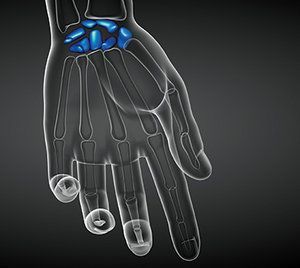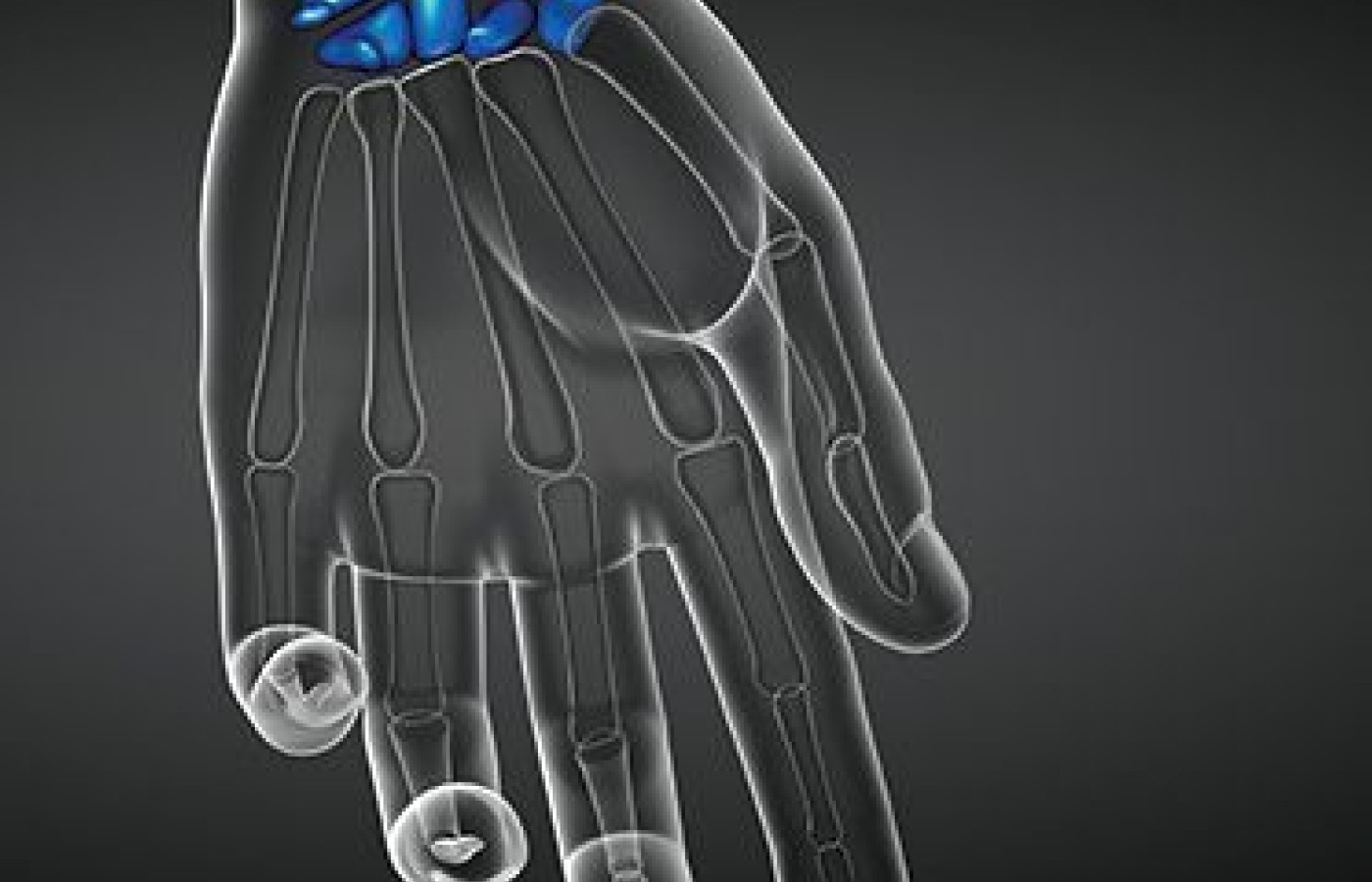You became a chiropractor to serve people, not an insurance company. You deserve to run a business that aligns with your values, supports your family and lights you up. Cash-based care isn’t just a pricing model – it’s a philosophy rooted in freedom, trust and respect for your patients and for yourself. Here's why - and how - to do it.
CTS: The Neglected Musculoskeletal Condition
There is little doubt back pain is the marquee condition for domestic and workplace disability, to say nothing for the prominence and reputation of chiropractors worldwide. Yet it's quite obvious that while such manual tasks as finishing, cleaning, meat packing, and other tasks in manufacturing become more widely recognized, repetitive stress disorders should take their place among leading musculoskeletal disorders – carpal tunnel syndrome in particular.
The Health Care Burden of CTS
CTS is often referred to as "tennis elbow of the wrist." Statistics relative to health care costs, work days lost and other variables suggest it has to be regarded more than casually:
- Over a lifetime, a typical CTS patient will lose about $30,000 in medical bills and time absent from work.1
- CTS accounts for the highest number of work days lost among all work-related injuries, with almost half the cases reported accounting for 31 days or more of work loss.2
- Figures provided by the National Center for Health Statistics in 1994 disclosed 850,000 new cases, with CTS being the most common and best known of the repetitive-stress injuries.2
- During the period 1993-1994, the median cumulative time lost from work for 4,443 claimants in Washington state was 38 days, while the cumulative loss of earnings amounted to between $232 million and $368 million in the seven years following their claim – a per-claimant loss of between $52,000 and $83,000.3 And these are figures originating from just one of 50 states!
- CTS claimants, on average, receive more than three times the worker's compensation days of paid time-
loss compared to claimants with upper extremity fractures; and their loss of earnings is about 30 percent more of their pre-injury levels compared to claimants with upper extremity fractures.3 - Repetitive motions involving microtasks have been ranked as one of the 10 leading causes of workplace injuries, comprising 85 percent of the total cost burden of disabling work-related injuries, using 2011 Bureau of Labor Statistics codes. Direct worker's compensation costs for this category came to $2 billion.4

Researching Mechanisms of Action
CTS is a progressive and painful condition associated with repetitive motion involving the hands and wrists, experienced when the median nerve running from the forearm into the palm of the hand is compressed within the limited, tunnel-like space at the wrist. In animal studies, nerve injury has been associated with carpal tunnel pressure in excess of 30 mmHg.
A recent study by a research team from the Liberty Mutual Research Institute for Safety found a marked increase in carpal tunnel pressure occurred during tasks involving an active grip (either pinch or power) combined with resisted wrist motion, most prominent during instances of wrist extension. Flexion, on the other hand (so to speak), resulted in little elevation of carpal tunnel pressure and in some instances actually reduced pressure.5
But even greater attention has to be paid to what was found in a recent assessment of rat median nerves after the performance of high-repetition reaching and grasping (eight reaches per minute for up to eight weeks). A number of cytokines – mostly proinflammatory in nature – originating from Schwann cells, fibroblasts, and phagocytic macrophages increased their expression as the result. The level of the notorious interleukin-6 rose after just three weeks, with four remaining cytokines (interleukin-1α, interleukin 1-β, tumor necrosis factor α and interleukin-10) joining IL-6, with peaking at week five.6
I was fortunate enough to hear all this at a seminar at Harvard Medical School a few Septembers ago and realized the implications of this finding were enormous, in that it suggests CTS and other repetitive-motion injuries could lead to the production of proinflammatory components that in other venues, have been actually shown to act as intermediates on the way to developing life-threatening atherosclerotic plaques.7-8
Cervical Nerve Root Involvement?
The story may become even more involved. A hypothesis which remains controversial, but has gained favor among chiropractors, was developed by Upton and McComas more than 40 years ago and states most patients with CTS not only have compressive lesions at the wrist, but also reveal damage to cervical nerve roots.9 Known as the double-crush hypothesis, it provides a rationale for adjusting the cervical spine as well as the extremities in the management of CTS.10
Chiropractic for CTS: Lessons From the Literature
So, this would obviously lead to the significance and potential of chiropractic in managing this condition. Thus far, chiropractic shown some success in the scientific literature. One of the earliest randomized clinical trials I had the joy of overseeing in an administrative capacity took place during my time at the Foundation for Chiropractic Education and Research, when we managed (with funding from the National Chiropractic Mutual Insurance Company) an investigation at what was then the Northwestern College of Chiropractic. Under the direction of Thomas Davis, the research team found chiropractic manipulation of the soft tissues and bony joints of the upper extremities and spine with ultrasound and nocturnal wrist supports produced significant improvement in perceived comfort and function, as well as nerve conduction and overall finger sensation. These outcomes were comparable to that achieved with ibuprofen and nocturnal wrist supports.11
No less than seven randomized clinical trials and one nonrandomized clinical trial addressing CTS were recently reported in an exhaustive systematic literature review by Brantingham, who concluded: "There is a Fair (B) level of evidence for MMT to specific joints and the full kinetic chain combined generally with exercise and/or multimodal therapy."12
Considering the prevalence, disease burden, costs and possible inflammatory comorbidities of CTS, combined with the fact chiropractic is recognized for managing musculoskeletal disorders and has begun to amass some encouraging evidence to support its efficacy, there is little doubt this area of management needs to be expanded in the near future. Under these circumstances, to deny the potential of chiropractic in effectively managing this condition compared to other modalities would in my opinion, be akin to denying climate change.
References
- "Carpal Tunnel Syndrome." J Amer Chiro Assn, 2004;41(10):29-30.
- "No Tunnel of Love: Carpal Tunnel Syndrome." J Amer Chiro Assn, 2002;39(7): 8-18.
- Washington State Department of Labor & Industries. Safety and Health Assessment & Research to Prevention.
- Liberty Mutual Research Institute for Safety. 2013 Annual Report of Scientific Activity, p. 6.
- Liberty, Op Cit; p. 12.
- Al-Shatti T, Barr AE, Safadi FF, Amin M, Barbe MF. Increase in inflammatory cytokines in median nerves in a rat model of repetitive motion injury. J Neuroimmunology, 2005;167:13-22.
- Packard RS, Libby P. Inflammation in atherosclerosis: from vascular biology to biomarker discovery and risk prediction. Clin Chem, 2008;54(1):24-38.
- Libby P, Ridker PM, Maseri A. Inflammation and atherosclerosis. Circulation, 2002;105:1135-1142.
- Upton AR, McComas AJ. The double crush in nerve entrapment syndromes. Lancet, 1973;2(7825):359-362.
- Russell BS. Carpal tunnel syndrome and the "double crush" hypothesis: a review and implications for chiropractic. Chiro & Osteo, 2008;16(2).
- Davis PT, Hulbert JR, Kassak KM, Meyer JJ. Comparative efficacy of conservative medical and chiropractic treatment for carpal tunnel syndrome: a randomized clinical trial. JMPT, 1998;21(5):317-326.
- Brantingham JW, Cassa TK, Bonnefin D, et al. Manipulative and multimodal therapy for upper extremity and temporomandibular disorders: a systematic review. JMPT, 2013;36(3):143-201.



